History on a shoestring at Nido 20: A memory site in its infancy
16 April 2012 – Zachary McKiernan
Letters from Chile, advocacy, social justice, public engagement, memory, museums, human rights, international, politics
In Chile between 1973 and 1990, according to the 2004 National Commission on Political Imprisonment and Torture (The Valech Report), 1,132 sites were utilized as centers of detention, torture, and extermination. They ranged from hospitals and soccer stadiums to police precincts and private houses. More than 250 operated in Santiago alone during Pinochet’s seventeen-year dictatorship. One of these centers was known as Nido 20, a non-descript home located at Santa Teresa 037 in the neighborhood of La Cisterna, less than a block from the Gran Avenida. These numbers and places paint for us a horrific map of a paralyzed society, a representation of the wide-reaching repression achieved by a policy of state terror. From the arid north through (sub)urban Santiago to the Patagonian south, in Pinochet’s infamous words “not a single leaf moves without me knowing.”
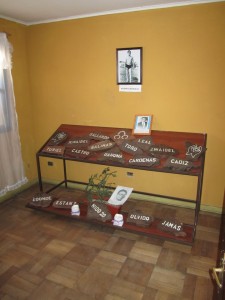 Linking Pinochet to the leaves of Nido 20 isn’t an easy exercise though. The Human Rights Committee of La Cisterna now in charge of the home have difficult and still-silenced histories to interpret at the site that functioned clandestinely and “normally” in the neighborhood in 1975. Moreover, those who “worked” in the home in that year, a short-lived yet lethal mix of state intelligence services and “civilians affiliated with nationalist and extreme rightist groups” (Valech, 461) known as Comando Conjunto, have been equally elusive in the historic record. But the 2005 “protection of Nido 20 demonstrates that the most ‘invisible’ places are as important to conserve as the most ‘emblematic’ of places” (Patio 29: Tras la Cruz de Fierro, 2009, 28). Or in other words, perhaps, Nido 20’s invisibility is emblematic of Pinochet’s wide-reaching human rights violations and, moreover, of today’s movement to make the knowledge of that visible and useful in the historic present.
Linking Pinochet to the leaves of Nido 20 isn’t an easy exercise though. The Human Rights Committee of La Cisterna now in charge of the home have difficult and still-silenced histories to interpret at the site that functioned clandestinely and “normally” in the neighborhood in 1975. Moreover, those who “worked” in the home in that year, a short-lived yet lethal mix of state intelligence services and “civilians affiliated with nationalist and extreme rightist groups” (Valech, 461) known as Comando Conjunto, have been equally elusive in the historic record. But the 2005 “protection of Nido 20 demonstrates that the most ‘invisible’ places are as important to conserve as the most ‘emblematic’ of places” (Patio 29: Tras la Cruz de Fierro, 2009, 28). Or in other words, perhaps, Nido 20’s invisibility is emblematic of Pinochet’s wide-reaching human rights violations and, moreover, of today’s movement to make the knowledge of that visible and useful in the historic present.
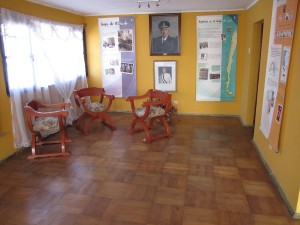 Getting a grip on the knowledge of Nido 20 through its House Museum of Human Rights: Alberto Bachelet Martinez, though, has perplexed me. For starters, Auturo Bachelet, the faithful general who died imprisoned under the Pinochet regime and father of former president Michelle Bachelet, who herself was imprisoned with her mother in Villa Grimaldi, never passed through Nido 20. The naming of the House Museum after General Bachelet was perhaps a political ploy and strategic nod by neighborhood activists, given that the Bachelet family is from La Cisterna.
Getting a grip on the knowledge of Nido 20 through its House Museum of Human Rights: Alberto Bachelet Martinez, though, has perplexed me. For starters, Auturo Bachelet, the faithful general who died imprisoned under the Pinochet regime and father of former president Michelle Bachelet, who herself was imprisoned with her mother in Villa Grimaldi, never passed through Nido 20. The naming of the House Museum after General Bachelet was perhaps a political ploy and strategic nod by neighborhood activists, given that the Bachelet family is from La Cisterna.
Moreover, after a handful of visits to the humble yet humming community and revealing conversations with the three-person neighborhood human rights committee active at the house, I always walked away with more questions than answers. The historic interventions and interpretations are generally ambiguous and incomplete. Seven dominating posters are donations from Villa Grimaldi and tell, well, mostly the story of Villa Grimaldi. There are no informative brochures or books for sale or even a website to consult. Only recently did the house receive Internet access and, equally important, two university students from Universidad de Santiago de Chile’s Department of History practicing their “practica.” Nido 20 is in no uncertain terms humbled by a severe lack of human and financial resources, struggling just to meet the approximately $120 monthly bill for water, electricity, and gas, to say nothing of the historic memory work that stands ahead. It is a site of memory in its infancy. So when the committee asked me to help with historic research, I couldn’t say no.
What was easy and exciting to get a grip on was Nido 20’s physical and political place in La Cisterna, to “always be connected directly to the community’s base,” according to committee member Fidel, “the unions, the students and teachers, the common people.” The importance of this cannot be understated given the current concerns and present reality of rights in Chile: access to education, economic and labor opportunities, and gender equality, to name a few. At the back of Nido 20, then, sits a large center where workshops in computing, cooking, and sewing are held. It is also utilized as a space of encounter for La Cisterna’s organizations that lack such a space. This dual function of Nido 20 makes it both a memory site and a community center focusing on present needs and realities.
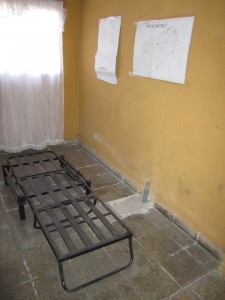 One of the goals of the committee is that workshop attendees will come to Nido 20 for practical reasons and leave with a greater and more contextualized idea of human rights through the house’s history. In a conversation I had with the son of a man who lost his life in Nido 20, doubts loomed about whether this is actually beginning to happen. Though he noted Nido 20’s geographical location as an important “reference for memory in the southern zone” of Santiago and its potential as a powerful community center, he advocated for an injection of professional collaboration at the memory site. As grassroots Nido 20 grows to gain more traction in a new genre of public memorials in Chile (note: this new genre, which I am exploring in my dissertation, is speculative in many ways and not fully developed), it’ll be necessary to have a better grip on the historic as well as administrative challenges of a House Museum of Human Rights.
One of the goals of the committee is that workshop attendees will come to Nido 20 for practical reasons and leave with a greater and more contextualized idea of human rights through the house’s history. In a conversation I had with the son of a man who lost his life in Nido 20, doubts loomed about whether this is actually beginning to happen. Though he noted Nido 20’s geographical location as an important “reference for memory in the southern zone” of Santiago and its potential as a powerful community center, he advocated for an injection of professional collaboration at the memory site. As grassroots Nido 20 grows to gain more traction in a new genre of public memorials in Chile (note: this new genre, which I am exploring in my dissertation, is speculative in many ways and not fully developed), it’ll be necessary to have a better grip on the historic as well as administrative challenges of a House Museum of Human Rights.
Historic sites, no matter how seemingly small, open up space to make histories visible and valuable. So, too, does the opening of this space create and contribute to the politics of the present. At Santa Teresa 037 this much is apparent. What is less apparent is how the histories and history’s silences in La Cisterna will reveal themselves in a political moment of shoestring budgets and increasing community needs. But the search is on at Nido 20, the activists are in motion. Common people are at work, assessors are on the ground, national and international attention is growing. I, too, have cast my lot in with the activists. The wheels of history are turning. Because if we take the time make visible the invisible, Nido 20 in the horrific map of 1,132 sites becomes terribly important.
~ Zachary McKiernan
Previous posts in the Letters from Chile series:




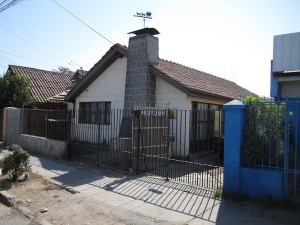
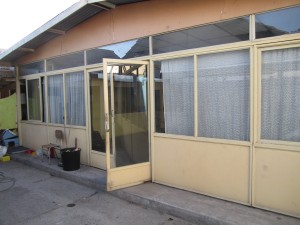
1 comment